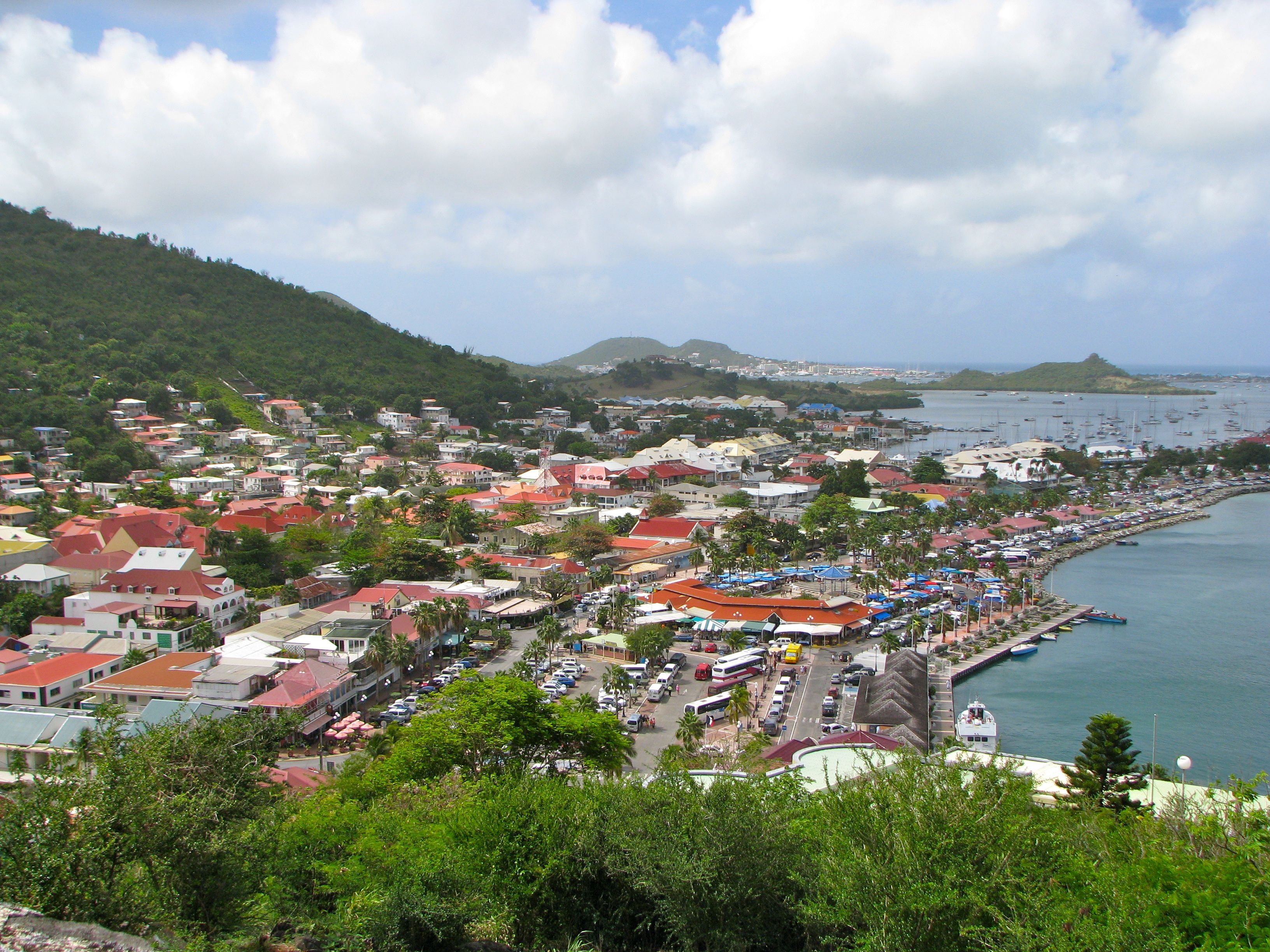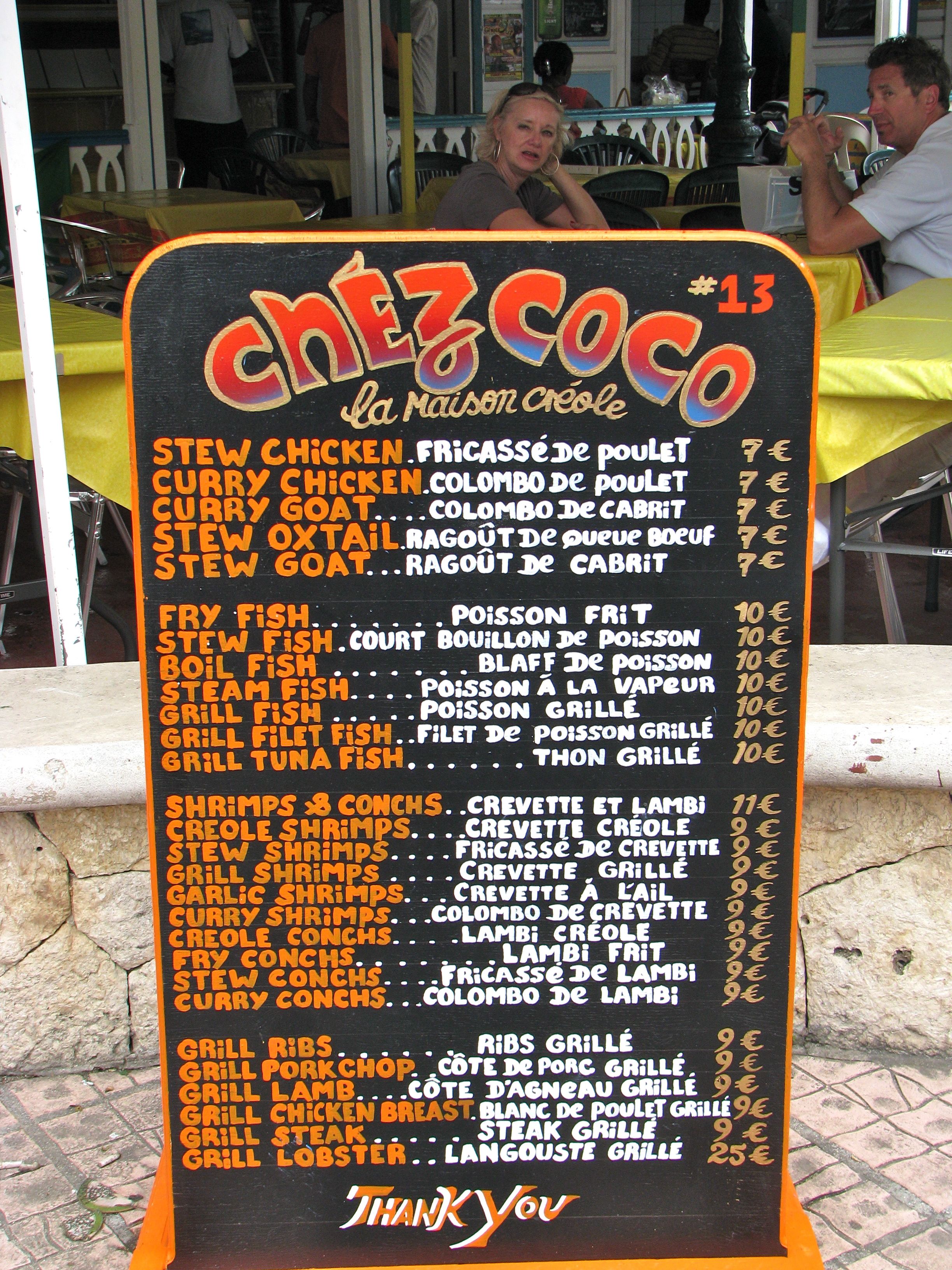Wednesday Market – Place du Marché; Marigot, Saint-Martin (March 2011)
An international border splits the island of St. Martin into French and Dutch halves. Marigot serves at the French capital and the largest French town with about 6,000 residents. It sits on the western side of the island on a picturesque bay, facing towards Anguilla (map). It has served as the capital for centuries, originally protected by historic Fort Louis, built on an adjacent hillside in 1789 (see my Fort Louis page).
Modern-day Marigot has the feel of a town in mainland France although with a Caribbean breeze and a subtropical climate. We wanted to make sure we experienced Marigot when it had an opportunity to shine during its best light, on a busy Wednesday market day. So we drove down from where we were staying in Grand Case early that Wednesday morning to avoid the largest crowds. We wanted to experience the market before hordes of cruise ship tourists picked it clean.
Logistics

Getting to the market was a breeze. We simply cut perpendicular from the main road traversing the western side of the island into Marigot proper until we hit the harbor. We couldn’t find any parking in the immediate vicinity of the market so we continued along the waterfront until spaces opened up. Although we didn’t realize it at the time, we were lucky because every available parking spot probably disappeared within the next half hour.
Later in the day the entire town of Marigot practically gridlocked with traffic. Oddly, we had much more difficulty leaving than arriving. The not-so-secret strategy is to start early for the best shopping choices, the lightest traffic, and the only reasonably available parking.
The market appears in this photo from the hilltop vantage of Fort Louis. It’s the nearby section with the blue tarps along the waterfront, on the right side.
For the Locals

Permanent vendor stalls dominated one portion of the market. This is where shoppers find seafood straight from boats unloaded earlier in the morning. Once that wrapped-up there were still plenty of other vendors selling all manner of fruits, vegetables and spices. This felt like a “real” market. It seemed to exist primarily for locals to stock-up on fresh seafood and produce. Tourists milled about this area too but not as much as they hovered around nearby stalls selling souvenirs and knick-knacks.
For the Tourists

Temporary tent-style stalls formed another section of the market. These sprang forth like mushrooms on major market days (Wednesday and Saturday) to join their permanent cousins. They more than double the size of the market on those days. Here people browsed through clothing, jewelry, and various crafts. Some objects were intricately handmade and others were undoubtedly spit-out by a factory somewhere in China. All of it was fun and and most of it was reasonably priced.
This was the only place on Saint Martin where we felt even slightly uncomfortable. It’s a safe environment but our urban sensitivities still gave us pause for concern. It would be a pickpocket’s dream. Throngs of cruise ship passengers flooding the market, paying little attention to their belongings or their surroundings.
I have no problem with people who like to cruise between the islands. Everyone deserves a chance to relax however they like. Nonetheless, their sheer numbers undoubtedly changed the character of any locale where they descended en masse. On the other hand, we also understood that the size and variety of the marketplace fluctuated with cruise ship schedules. The market would be a lot different without them. With that in mind, we did some shopping in the scrum as we could. Then we retreated to the quieter sides of the market from time-to-time to catch our breath.
The ruins of old Fort Louis appeared atop the hill in this photograph. That was one of the places where we hid when we needed a little elbow room.
Lunchtime

We stopped for lunch at one of the several lolos surrounding the marketplace. A lolo is a casual creole restaurant serving simple fare such as grilled or barbecued meats and seafood along with abundant side dishes. They generally don’t have walls, nor do they need them, with only a roof separating dinners from the great outdoors. They called this one Chez Coco — La Maison Créole. We tried the oxtail stew and the curried goat. Both were excellent and quite inexpensive. While the shop priced everything in Euros they also accepted Dollars at the same rate, a very attractive proposition that is common on the French side of the island.
This was an ideal location for a leisurely meal, but more importantly an ideal location for people watching as the many varied characters wandered through the Place du Marché on a busy Wednesday.

Leave a Reply